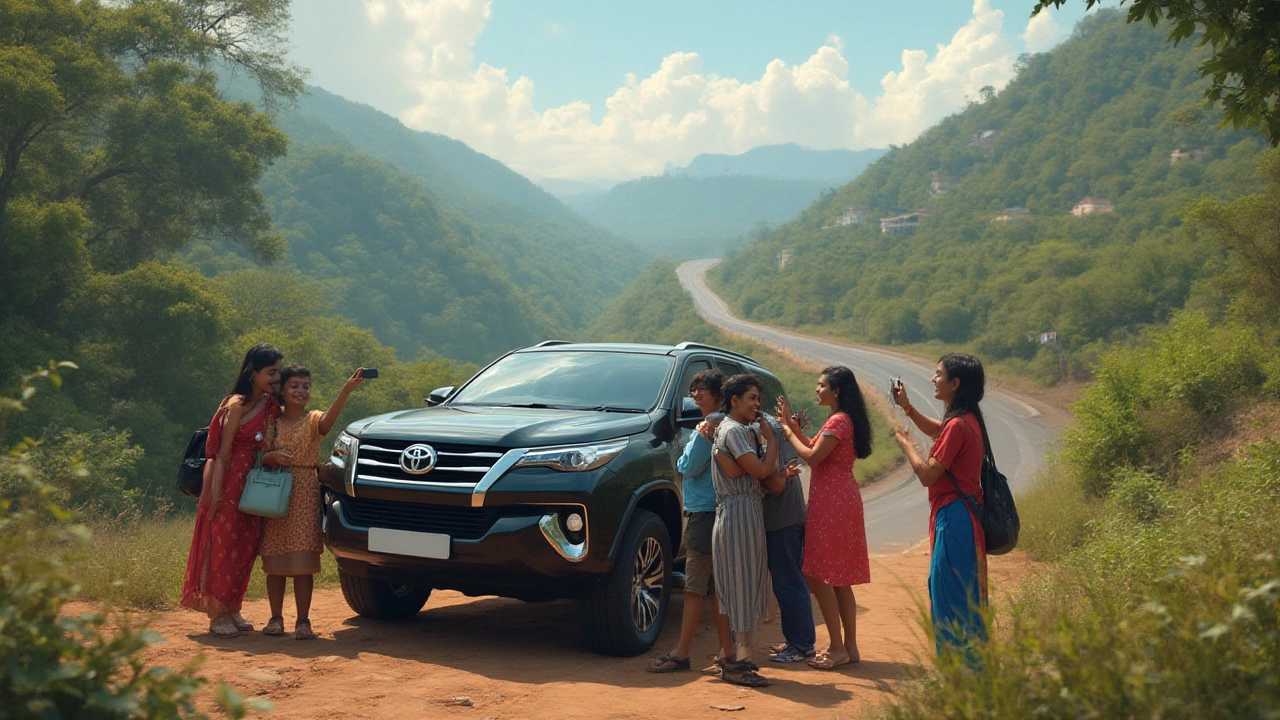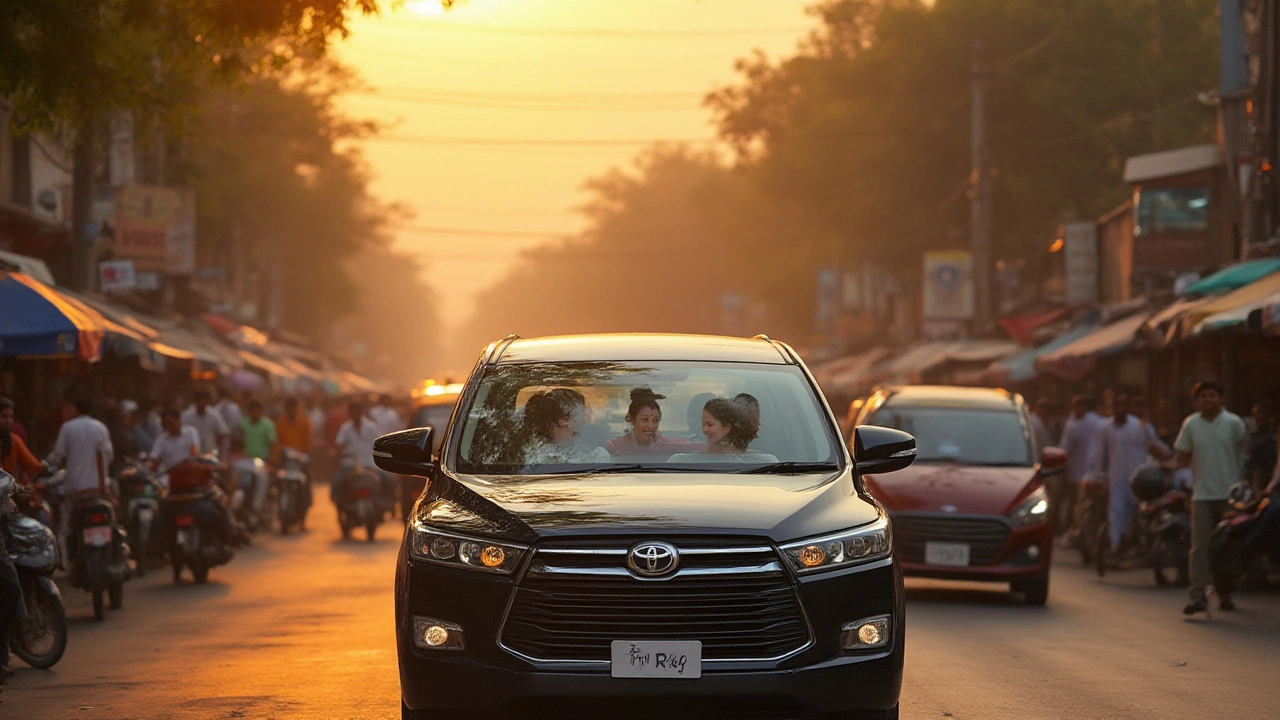If you’re stuck in traffic on an Indian highway, look around—the odds of spotting a Toyota are pretty high. Ever wondered why so many Indian families, cab drivers, and even government officials seem to pick the same brand? This isn’t your regular car craze. It’s a phenomenon tied to trust, smart economics, and some little quirks that are uniquely Indian. Let’s crack open the hood and see what’s really fueling the Toyota obsession in India.
Trust, Toughness, and Taxis: Why Toyota Became a Household Name
Start with trust. When cars mean more than just transport—sometimes an investment, sometimes a lifeline—you want a brand that won’t flinch. Back in the early 2000s, most people stuck with local classics like the Ambassador or Maruti 800, but once Toyota launched the Qualis, it was like someone hit the cheat code for Indian roads. Here was a car that could swallow potholes, ferry a family of ten, and rack up half a million kilometers without a murmur. Taxi unions upgraded overnight. If you see an Innova racking up 700,000 km as an intercity taxi today, that’s not a rare sight—it’s business as usual. A 2018 report by Autocar India showed that 45% of Innovas sold were used as cabs or by fleet operators. Think about that for a second. One model, nearly half its volume serving commercial owners who can’t afford a breakdown.
Owning a Toyota is a bit like buying a pressure cooker you know will outlive your kitchen. Indian families don’t just buy cars for themselves—they think long term, for weddings, for family trips, for passing down to their kids. Toyota’s reputation for reliability means your investment is safe. According to a 2022 survey by JD Power India, Toyota scored the highest on the dependability index for cars older than five years, beating even local brands that had dominated for decades.
Safety and toughness aren’t just marketing—people have stories of Corollas and Fortuners surviving accidents that flattened other cars. YouTube is full of crash test videos and testimonials, but Indian word-of-mouth tells the real tale: “Toyota chalana hai toh tension mat le.” Drive a Toyota, don’t worry about breakdowns. Flood, landslide, crazy summers—all taken in stride. That’s a direct shot at the Indian concern for durability, something you can’t fake with fancy brochures.
Pocket Math: Low Maintenance, High Value
If you’ve ever seen your uncle bargain with a mechanic, you already know maintenance costs can make or break your love for a car. Toyota nails it here. Spare parts for Toyota are affordable, widely available, and, best of all, hardly ever needed. Most Toyota owners talk about servicing like it’s a regular cup of chai—fast, reliable, and never a rip-off. The cost of owning an Etios or a Corolla doesn’t creep up with hidden surprises. Toyota’s own data shows that over a five-year period, service and maintenance of an Innova costs about ₹1.2 per kilometer. Maruti Suzuki might be a hair cheaper, but Toyotas bring more muscle and comfort for that extra rupee.
Resale value is where Toyota makes rivals sweat bullets. Ask any used car dealer—the moment you mention a five-year-old Innova or Fortuner, they’ll quote a price that makes new-car buyers do a double take. According to OLX Autos’ 2023 market report, Toyotas lose just 25% of their value in the first four years, while some competitors drop by 35-40% in the same time. That’s an insane advantage if you plan to upgrade later on.
Indians are famously value-minded. A car isn’t just about initial cost; it’s about stretching every rupee as far as it will go. Toyota’s ‘QDR’ philosophy—Quality, Durability, Reliability—is pasted on every showroom wall, but you really feel it when you don’t have to call for tow trucks at midnight. It’s not just a tagline; it’s built into the buying decision process for most Indian customers.

Toyota Features That Win Indian Hearts
It’s not all about being tough and cheap to run. Toyota figured out that space is a top priority in India, whether it’s the extended joint family or the yearly Diwali luggage overload. The Innova, with its three-row seating, sliding seats, and massive boot, is as close as you’ll get to a magic bus for Indian families. Even the Glanza, a compact hatchback, manages a roomy back seat, making it a hit in both cities and smaller towns.
Fuel efficiency plays a big part too. India has some of the wildest fuel price swings, so cars like the Toyota Urban Cruiser Hyryder or the old Etios diesel became game changers. In 2023, the Hyryder’s hybrid version delivered close to 27 km per liter in city traffic—numbers that get heads turning in a country where every drop is counted. The more recent launch of flex-fuel and hybrid variants means Toyota isn’t resting on its old reputation; it’s pushing tech that fits right into what Indian buyers want.
Now add in small, everyday things. Cup holders in the right places (for that chai on the highway), robust AC units that battle Delhi summers with ease, and easy-to-navigate infotainment systems built for bumpy roads and bumpy playlists. Toyota has a knack for listening to their Indian customers, quietly tweaking models each year based on feedback. By 2019, even basic models came with dual airbags and ABS—features that became standard well before many competitors followed suit.
Here’s a quick look at how a few top Toyota models stack up in India:
| Model | Average Maintenance Cost (5 years) | Resale Value after 5 years | Fuel Efficiency (km/l) |
|---|---|---|---|
| Innova Crysta | ₹65,000 | 75% | 11-14 |
| Fortuner | ₹85,000 | 78% | 10-14 |
| Etios | ₹40,000 | 72% | 16-23 |
| Urban Cruiser Hyryder | ₹48,000 | 74% | 17-27 |
Notice the strong fuel efficiency, relatively low maintenance, and high resale value for each model. It’s a pattern that makes spending a little more up front feel completely justified to most buyers.
What’s Next: Toyota and the Changing Indian Roadscape
The Indian car scene isn’t stuck in the past. EVs, hybrids, and even hydrogen-powered models are coming. Yet, Toyota is making sure it isn’t left behind. Their latest partnership with Maruti Suzuki is producing models built with Indian roads and wallets in mind. They even launched pilot projects for flex-fuel cars using ethanol blends in 2024, making a statement on local adaptability. The Urban Cruiser Hyryder's hybrid tech isn’t just eco-friendly; it hits higher mileage, exactly what the daily commuter wants as city traffic gets worse.
As urban infrastructure gets more crowded and rules on emissions tighten, Toyota’s investment in hybrid and clean energy models is helping it stay ahead. Remember, Indians want cars that balance new tech with good, old-fashioned reliability. Surveys from Autocar India and ICICI Lombard show 91% of Indian new-car buyers list reliability and after-sales support as top priorities—Toyota checks both without trying too hard.
But it’s not just about shiny new models. The secondhand car market is massive. Used Toyotas are often snapped up within days, sometimes by buyers who trust only the word of a mechanic or a friend. This says a lot about Indian mindsets: trust, minimal risk, and community word-of-mouth still matter as much as flashy ads.
One interesting tip—look for hidden older Toyotas in rural areas. Farmers and small business owners keep these running far longer than others, thanks to the legendary toughness of engines like the 1KD diesel or simple petrol setups. Anecdotes about Innovas still running smooth after ten years aren’t just urban legends—they’re regular dinner-table stories.
Indian roads test every car to the extreme. From the searing summer highways to the chokehold of monsoon traffic jams, Toyotas emerge with fewer complaints, fewer visits to the workshop, and a reputation that’s cemented year after year. Given all this, you can see why even as new brands roll in, Toyota is still king of the hill—by design, by trust, and by sheer numbers on the road.

